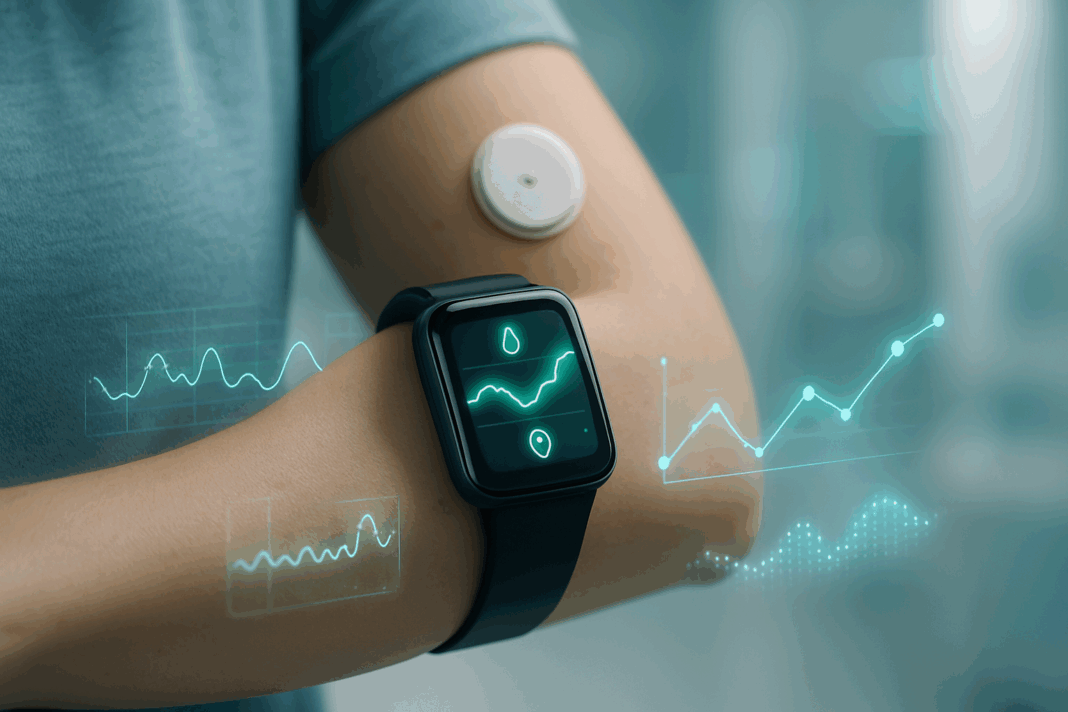As diabetes continues to be a widespread health concern, innovative tools for managing the condition have emerged to assist both patients and healthcare providers. Among these technologies, diabetic watches—also known as glucose monitoring watches—have gained significant attention in recent years. These wearable devices, such as continuous glucose monitoring (CGM) watches, are marketed as convenient alternatives to traditional blood glucose testing methods, offering a more streamlined approach to monitoring blood sugar levels. But how accurate are these devices, and can they truly replace conventional testing? In this article, we will explore the effectiveness of these wearable glucose monitors, examine how they work, and discuss their role in diabetes management.
You may also like: Breakthroughs in Current Diabetes Research: What the Latest Studies Reveal About Treatment and Prevention
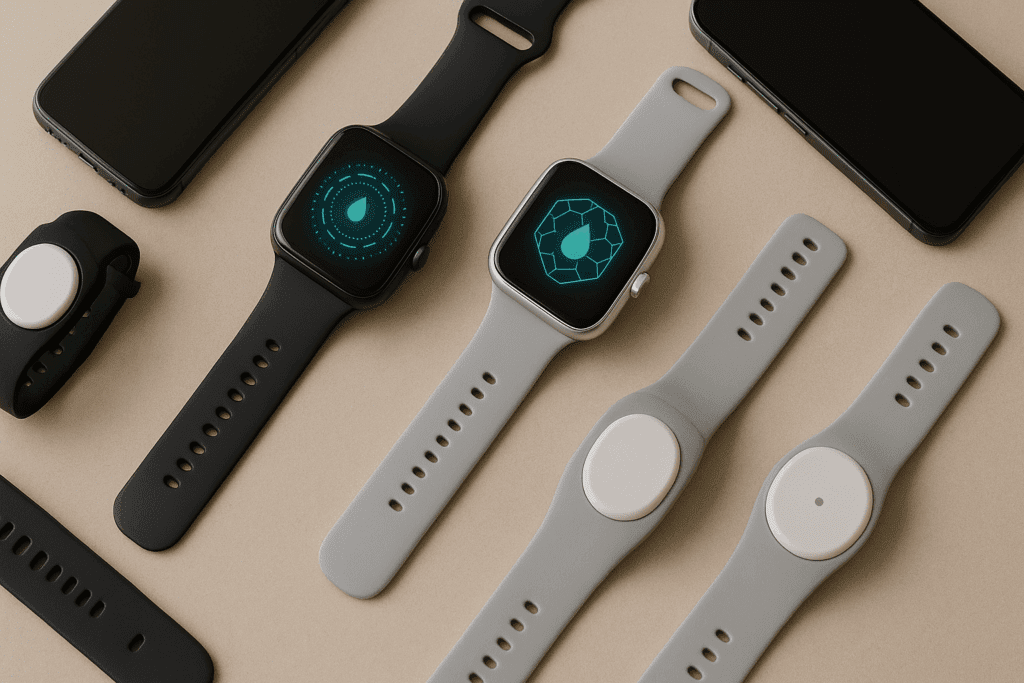
The Rise of Diabetic Watches in Diabetes Management
Diabetic watches are part of a growing category of non-invasive glucose monitoring devices, aimed at simplifying blood sugar management for people living with diabetes. These devices, such as the glucose monitor watch and blood glucose wrist monitor, have rapidly evolved from basic fitness trackers to sophisticated health tools capable of tracking real-time blood sugar levels. With features like continuous glucose monitoring, these diabetic watches monitor fluctuations in blood sugar throughout the day, providing users with insights that can help them make informed decisions about their diet, activity levels, and medication.
The appeal of these devices lies in their ability to provide continuous data without the need for fingerstick blood tests, which are often painful and inconvenient. Additionally, the convenience of having a glucose meter integrated into a wearable device, such as a wristwatch, appeals to many people with diabetes who want to monitor their condition discreetly and without disruption to their daily activities. However, for all their benefits, questions remain about the accuracy of blood glucose watches—questions that are crucial for both users and healthcare providers.
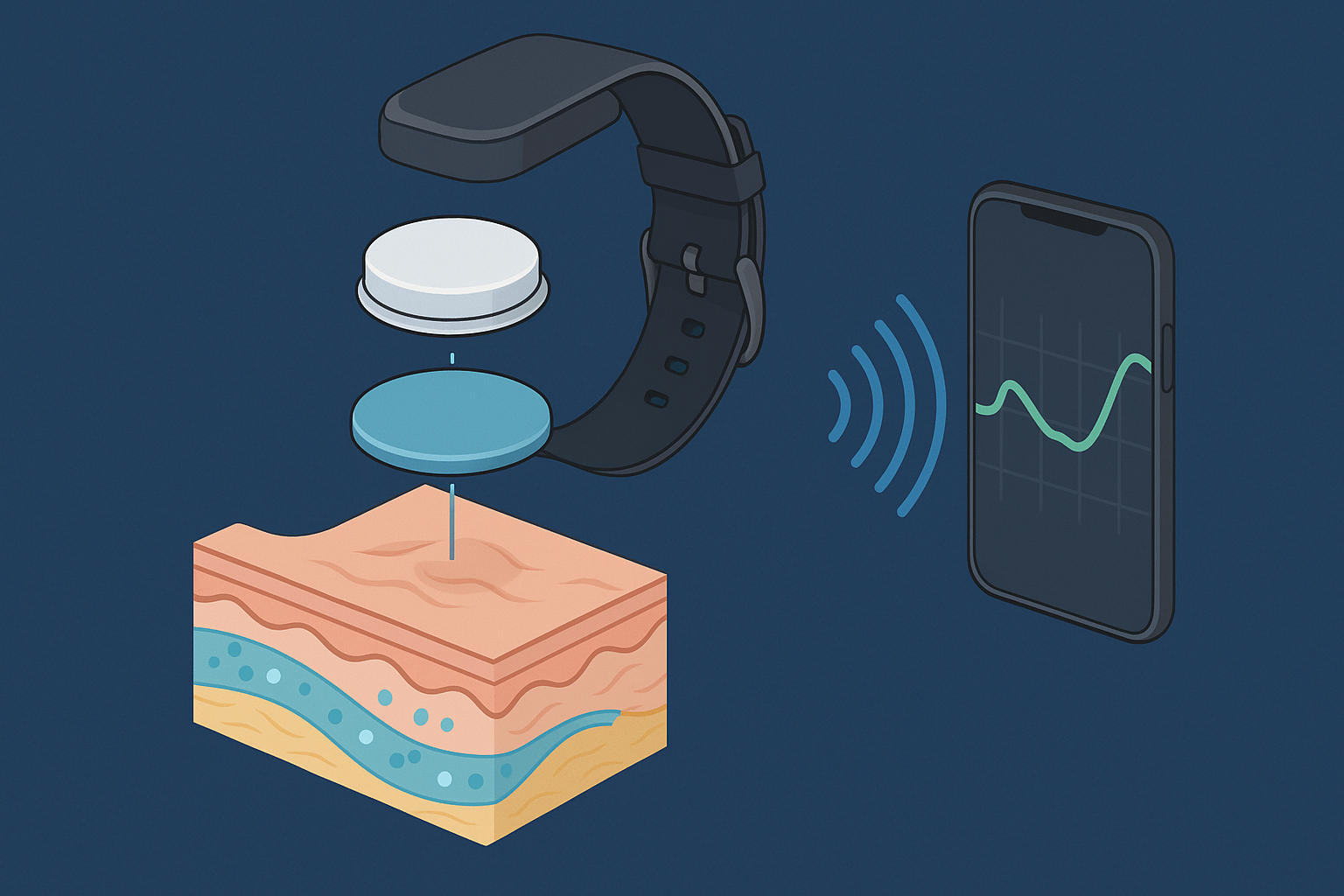
How Do Diabetic Watches Work?
Before assessing their accuracy, it is important to understand how these devices function. Most diabetic watches, such as continuous glucose monitoring watches (CGM watches), operate on the principle of measuring glucose levels in the interstitial fluid, which is the fluid that surrounds the cells. A tiny sensor, often embedded in the watch or attached to the skin, detects fluctuations in glucose concentrations in the interstitial fluid, which roughly correlates with blood glucose levels. This data is then transmitted to the watch or a smartphone app, providing the user with real-time information.
Unlike traditional glucose meters that require a blood sample, these non-invasive glucose watches use sensors that can measure glucose levels continuously, without the need for lancets or blood samples. This allows for near-constant monitoring of blood sugar levels, giving users an up-to-date view of their condition throughout the day. Some diabetic glucose watches also incorporate features like alarms or notifications when blood sugar levels reach dangerously high or low points, allowing for immediate intervention.
While these features sound promising, it’s essential to consider whether the accuracy of these devices matches up to the claims made by manufacturers. With blood glucose control being critical to preventing complications from diabetes, the reliability of these watches is a vital concern.
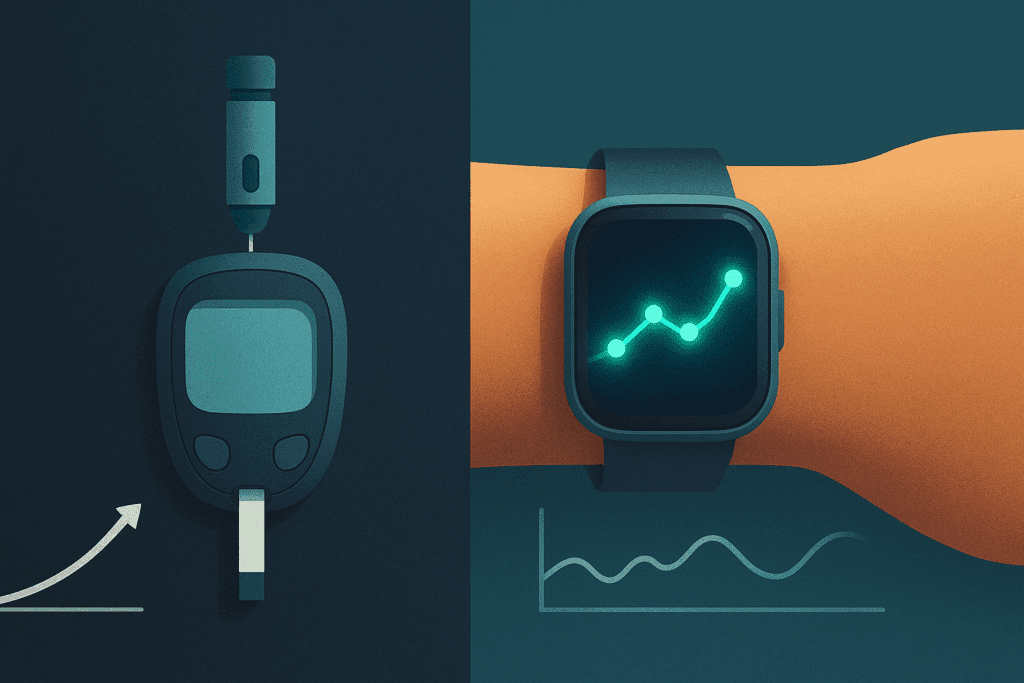
The Accuracy of Blood Glucose Watches
One of the primary concerns with diabetic watches is their accuracy compared to traditional blood glucose monitors. Research into the effectiveness of these devices has yielded mixed results, with some studies suggesting that these watches are reliable, while others point out discrepancies between the results they provide and those from standard blood glucose meters. The main issue lies in the fact that glucose levels in interstitial fluid may not always match those in the blood, especially during rapid changes in blood sugar levels. For instance, when a person’s blood sugar is rising or falling quickly, the glucose levels in the interstitial fluid may lag behind, leading to inaccuracies in readings.
Studies have shown that while diabetic watches, such as wristwatch blood glucose meters, can be highly accurate during steady-state blood sugar levels, their performance may be less reliable during periods of fast fluctuations. A study published in the Journal of Diabetes Science and Technology found that while CGM devices were generally effective at tracking blood glucose levels, they tended to show a higher degree of variability when blood sugar levels were changing rapidly.
Another concern is the potential for sensor errors. Diabetic watches use tiny sensors to detect glucose in the skin, and these sensors can be affected by various factors, including skin temperature, hydration levels, and even the sensor’s age. Some users report inaccurate readings after prolonged use, which may be due to sensor degradation over time. Furthermore, the devices may not be suitable for individuals with certain skin conditions or those who experience excessive sweating, as these factors can interfere with the sensor’s ability to deliver accurate readings.

Are Glucose Monitoring Watches Reliable Enough for Daily Use?
While the accuracy of diabetic watches may not be perfect, many users find that they are sufficiently reliable for day-to-day monitoring. For individuals with stable blood glucose levels, a continuous blood glucose monitoring watch can provide a practical and convenient alternative to fingerstick testing. These devices give users a quick snapshot of their blood sugar levels and can help identify trends, such as times of day when blood sugar tends to spike or dip. This can help users take preventative actions, like adjusting their diet or exercise routines, to maintain more consistent glucose levels.
However, for individuals with more complex diabetes management needs—such as those who experience frequent hypoglycemic (low blood sugar) or hyperglycemic (high blood sugar) episodes—a continuous blood glucose monitoring watch may not provide the level of accuracy needed to make critical treatment decisions. In such cases, diabetic watches can serve as a complementary tool but should not be relied upon as the sole method of blood glucose testing. Healthcare professionals typically recommend using a traditional blood glucose meter alongside the glucose watch for confirmation when blood sugar readings fall outside of the desired range.

The Role of Diabetic Watches in Early Detection and Prevention
Despite concerns about accuracy, glucose monitoring watches have a significant potential role in the early detection and prevention of diabetes complications. The continuous data provided by these watches can offer valuable insights into how certain behaviors—such as meals, exercise, and medication—affect blood glucose levels. By tracking these patterns, individuals with diabetes can make more informed decisions about their lifestyle and treatment plans.
For example, if a user notices that their blood sugar tends to spike after consuming a specific food or engaging in a certain activity, they can take steps to modify their behavior to prevent those spikes. Additionally, diabetic watches that provide real-time alerts can help users take prompt action when blood sugar levels are too high or too low, reducing the risk of severe complications such as diabetic ketoacidosis (DKA) or hypoglycemic episodes.
Furthermore, these devices offer the potential to empower individuals to take an active role in managing their diabetes. By providing real-time feedback on glucose levels, users can feel more confident in their ability to maintain their health and make changes to their habits that promote better glucose control.
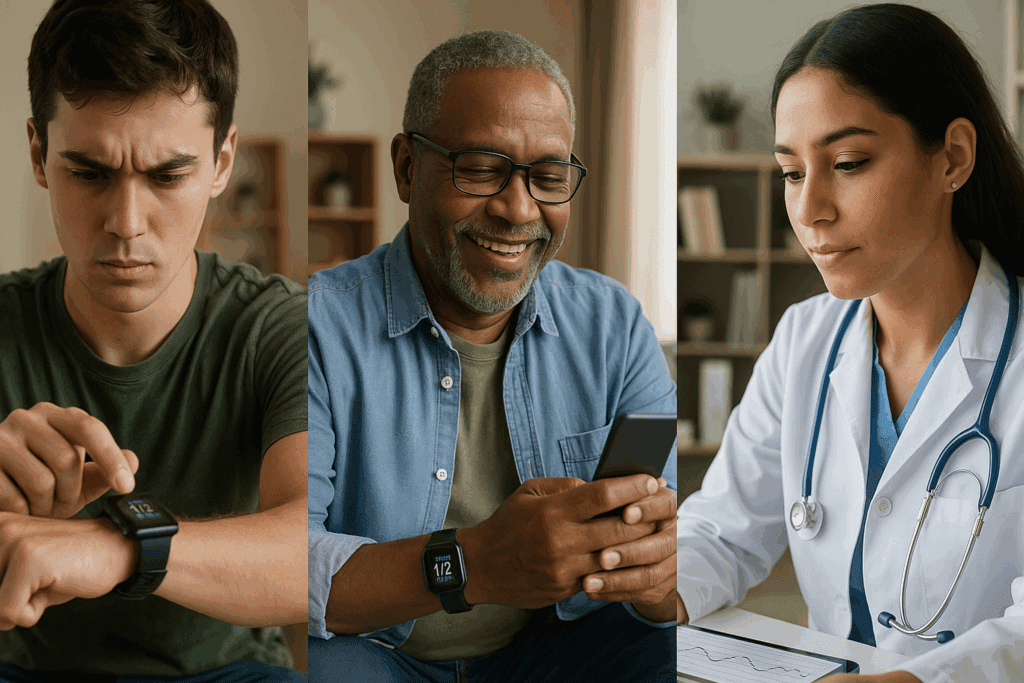
Do Blood Glucose Watches Work for Everyone?
The effectiveness of glucose monitoring watches can vary significantly between users. Factors such as skin type, lifestyle, and the presence of other health conditions can all affect the performance of these devices. For example, individuals with dry skin or a tendency to sweat heavily may find that the sensors on their glucose watch are less accurate than those who have more stable skin conditions. Additionally, people with type 1 diabetes, who experience more frequent fluctuations in blood sugar, may require more precise monitoring than what a glucose watch can provide.
While these devices may work well for some individuals, others may find that they need to use them in conjunction with other forms of blood glucose monitoring. The wristwatch blood glucose monitor is particularly useful for those who prefer a more convenient, less invasive method of tracking their glucose levels, but it may not be the best option for everyone.
Frequently Asked Questions (FAQ) about Diabetic Watches
What exactly is a diabetic watch, and how does it work?
A diabetic watch, such as a glucose monitor watch, is a wearable device designed to track blood sugar levels continuously. The watch uses a non-invasive sensor that monitors glucose levels in the interstitial fluid just beneath the skin, providing real-time data on blood sugar fluctuations. This data is then displayed on the wrist watch blood glucose meter, making it accessible to users throughout the day. Continuous glucose monitoring (CGM) watches provide an ongoing readout, which allows users to see trends in their blood sugar levels over time. This can be particularly helpful for diabetics who need to maintain constant awareness of their condition without relying on traditional blood glucose monitoring methods.
Are blood glucose watches accurate compared to traditional glucose meters?
The accuracy of diabetic watches is generally considered acceptable for most users but can vary depending on factors such as the brand of watch and how quickly a person’s blood sugar levels are changing. Studies show that while continuous blood sugar monitoring watches provide useful information, they may not be as accurate during periods of rapid glucose fluctuations. This is because interstitial fluid (the type of fluid measured by these watches) lags behind the blood glucose levels. However, many diabetic glucose watches, like wristwatch blood sugar monitors, are still very reliable for tracking overall trends and can offer insights that help users manage their diabetes better between traditional testing intervals.
Do glucose monitoring watches work for everyone, or are there limitations?
Glucose monitoring watches are not one-size-fits-all solutions, and their effectiveness can vary depending on a user’s specific circumstances. For individuals with type 1 diabetes, where blood glucose levels can change rapidly, a continuous glucose monitoring watch might not always provide the precision needed for acute management. On the other hand, those with more stable blood sugar levels may find that diabetic watches monitor their condition effectively. Additionally, some people may find that wristwatch blood glucose meters are not as accurate due to skin conditions, sweat, or the need for sensor recalibration. As a result, these devices may be most beneficial as a supplement to regular blood glucose testing.
What makes a blood glucose wrist monitor different from a regular blood glucose meter?
Unlike traditional blood glucose meters, which require a blood sample from a fingertip, a blood glucose wrist monitor measures glucose levels continuously via sensors embedded in the device. This method is non-invasive, meaning users don’t have to deal with the pain or inconvenience of finger pricks. A glucose meter watch collects data from the interstitial fluid, providing a less intrusive but still informative way to track blood sugar levels. The advantage of this system is that it offers real-time data, allowing for proactive adjustments to diet, medication, and exercise without waiting for lab test results.
Can a diabetic watch help prevent low blood sugar episodes?
Yes, many diabetic glucose watches, especially continuous glucose monitoring (CGM) watches, offer real-time alerts for when blood sugar levels dip too low or rise too high. These notifications can help users take immediate action to prevent a hypoglycemic (low blood sugar) or hyperglycemic (high blood sugar) episode. For instance, a blood sugar level watch might send an alert when glucose readings fall below a pre-set threshold, giving the user enough time to take steps, such as consuming glucose, to avoid a dangerous situation. The proactive nature of these alerts is particularly valuable for those who experience frequent blood sugar fluctuations.
How do blood sugar level watches help manage diabetes in everyday life?
A blood glucose watch provides continuous insights into a user’s blood sugar levels, allowing them to track changes throughout the day. This data is invaluable for managing diabetes effectively because it reveals trends that might not be visible with occasional fingerstick tests. For example, a glucose monitor watch might help identify times when blood sugar levels consistently spike after meals, encouraging users to make dietary changes. These watches also provide users with the flexibility to monitor their levels discreetly, making it easier to manage their diabetes in social or professional settings without drawing attention to the process.
What are the potential drawbacks of using a glucose monitoring watch?
While glucose monitoring watches are an excellent tool for managing diabetes, they do have some potential drawbacks. One limitation is the accuracy of the sensors, especially during periods of rapid glucose changes. Another challenge is the device’s dependence on battery life and the need for regular sensor calibration to ensure accurate readings. Users may also experience discomfort if the watch is worn for extended periods, particularly if the sensor becomes irritated or if the watch does not fit comfortably. Lastly, the cost of diabetic watches can be a barrier, as not all insurance plans may cover these devices, and out-of-pocket expenses can be high.
Are there any significant differences between various glucose meter watches on the market?
Yes, there are notable differences between glucose meter watches, including the type of sensor used, the ease of use, and the accuracy of readings. Some diabetic watches monitor glucose levels continuously, while others may require occasional calibration or data downloads. Additionally, some models offer more advanced features, such as integration with smartphone apps for data tracking and trend analysis, while others may focus on providing basic monitoring. It’s important to research different models, consider user reviews, and consult with healthcare providers to determine which diabetic watch glucose monitor suits your lifestyle and needs.
Do blood glucose watches work as a primary method of monitoring blood sugar?
Diabetic watches, like wrist watch blood glucose meters, are effective for tracking general trends in blood glucose levels but are typically not recommended as the sole method of monitoring. While they provide valuable real-time data, they may not be as accurate as fingerstick testing, especially when blood sugar levels are fluctuating quickly. Many healthcare providers recommend using a blood glucose monitoring watch in conjunction with traditional blood glucose meters for more precise measurements, particularly when making critical decisions about insulin dosing or other treatments. In this way, diabetic watches serve as a complementary tool rather than a replacement.
Are glucose watches a cost-effective solution for managing diabetes?
The cost-effectiveness of glucose watches can vary depending on the individual’s health needs and the type of watch they choose. Continuous glucose monitoring (CGM) watches, while offering significant benefits in terms of convenience and real-time tracking, can be quite expensive. The price of the devices and their associated sensors can add up over time, especially since many require regular sensor replacements. However, for individuals with diabetes who experience frequent blood sugar fluctuations, investing in a non-invasive glucose watch may ultimately lead to fewer emergency medical visits or hospitalizations, making the long-term cost worth it. It’s also worth checking whether insurance providers cover some of the expenses for these devices, as some plans may offer partial reimbursement.
Conclusion: The Future of Blood Glucose Watches
As technology continues to evolve, the accuracy and functionality of diabetic watches are likely to improve. Many companies are working on enhancing the sensors in glucose monitoring watches to provide more accurate and reliable readings. Moreover, advancements in data analytics and machine learning could enable these devices to detect patterns in blood sugar fluctuations more accurately, leading to better predictive capabilities.
While there are still limitations to the technology, diabetic watches offer a promising tool for managing blood sugar levels in a more convenient and less invasive manner. For individuals with stable blood glucose levels, these devices can be a game-changer in diabetes management, providing real-time data that can guide healthier lifestyle choices. However, for those with more complicated blood sugar patterns, traditional glucose meters may still be necessary for precise control.
In the end, diabetic watches are not a one-size-fits-all solution, but they represent an exciting step forward in the ongoing effort to improve diabetes care. With further research and development, these devices could become even more accurate, reliable, and integral to diabetes management in the future.
Further Reading:
Smartwatches: Monitoring Diabetes from Your Wrist
Is blood sugar monitoring without diabetes worthwhile?
Disclaimer
The information contained in this article is provided for general informational purposes only and is not intended to serve as medical, legal, or professional advice. While MedNewsPedia strives to present accurate, up-to-date, and reliable content, no warranty or guarantee, expressed or implied, is made regarding the completeness, accuracy, or adequacy of the information provided. Readers are strongly advised to seek the guidance of a qualified healthcare provider or other relevant professionals before acting on any information contained in this article. MedNewsPedia, its authors, editors, and contributors expressly disclaim any liability for any damages, losses, or consequences arising directly or indirectly from the use, interpretation, or reliance on any information presented herein. The views and opinions expressed in this article are those of the author(s) and do not necessarily reflect the official policies or positions of MedNewsPedia.


